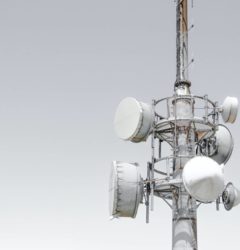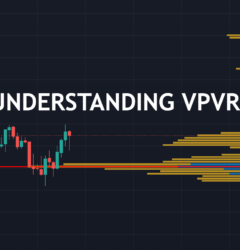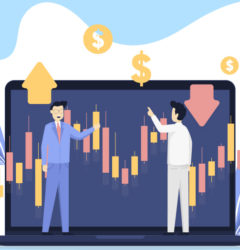24 May
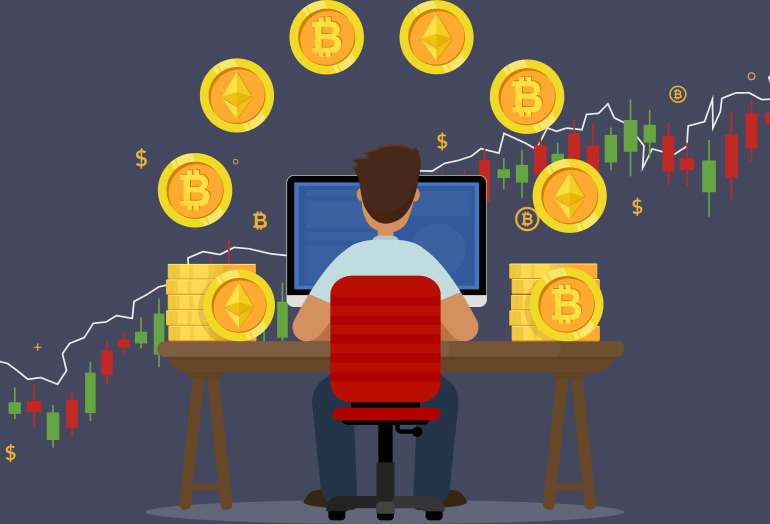
Margin trading is a type of transaction in which individual investors buy more shares than they can afford. They take out a loan from the exchange to increase their profits.
If you are a trader, you have probably seen the term trading with margin or leverage. It is a trading method by which you can use funds provided by a third party, which is usually the trading platform you are using. The goal is to strengthen your position and thus get more profit from the trading.
Thanks to this, margin trading accounts allow traders to generate large amounts of capital, allowing them to make the most of their positions. However, this ability to increase the amount of capital is risky because it can generate excellent profits and create large losses and debt.
Despite this, these tools have become very important in cryptocurrency markets. It is recommended for beginners to use trading signals in order not to lose profitable deals.
How does margin trading work?
First, you need to understand that there is no such functionality in almost any exchange, only in some. On exchanges with this feature, when you want to trade by performing a margin trade, you must lock in a percentage of the total value of the order you are about to create. The best way to find profitable trades is to use trading signal profits.
- For example, if you want to create a $10,000 order by investing $2,000 of your capital (margin), the platform should be able to use your position five times (lend you a loan) to reach the total order amount you want. If the platform accepts your leverage terms, you have successfully completed the margin trading operation. The success or failure of your position will depend on the market and your study of it.
- At this point, if you win the position, you make a profit as if you have $10,000; here, the platform will split the profit for you and the platform. In other words, it’s a happy end. However, if your position loses, all the money you put into the position will be lost, and for that, you only lose a fifth since you have x5 leverage.
Unfortunately, the second option is the most common due to the high volatility of the cryptocurrency market, and it is very easy to be tempted by large leverage. At the same time, when transactions are closed, you may lose everything within a few hours. You need to use trading signals and practice on a demo account to avoid losing money.
Leverage levels
The above example helps to understand how margin trading works. It is best to use additional trading signal profits to minimize risks. The reality is that every trading platform or broker that supports this feature has its own rules on how to apply margin trading. In particular, the levels of margin and leverage they allow their users.

- Leverage is one of the most volatile things in margin trading. For example, in the stock markets, the leverage is usually between 2x and 5x. In the futures markets, leverage is usually between 15 and 25. On the other hand, it is not uncommon to see 200x margin trading in the forex markets, which provides insight into the management of these markets and the leverage opportunities that exist in each of them.
- The same thing happens in the cryptocurrency markets. In these markets, the most common leverage is between 5x and 10x for major trading pairs, especially Bitcoin. But some platforms offer up to 100x leverage, as is the case with Bitmex.
Margin Market types are not recommended for beginners. These are places with a great risk of losing money. You need to understand what you are doing and use trading signals to minimize risks.
Types of operations
Unlike traditional markets, margin trading also allows you to make money when the price falls, that is, taking short trades in addition to your regular long trade. Traders use trading signals to see a profitable deal in time.
- The trader’s margin remains locked as collateral for the borrowed funds. This guarantee allows trading floors to close positions without loss of borrowed funds. Instead, the collateral is liquidated, causing the trader to lose the entire position.
- Many traders consider this to be unfair. However, it is clear that the platform protects your investment, and if your trade turns out to be unprofitable, redeem it while preserving your funds. This action is a margin call and is the worst thing that can happen to a trader using margin trading. This means that the bet you made was not only unsuccessful but that you also lost all the money placed in the position. But if, on the contrary, the operation is successful, you will receive the profit multiplied by the leverage. To reduce risks, you need to set stop loss and use trading signal profits.
Each platform has its own rules for dealing with leverage or margin, among others. If you decide to engage in margin trading despite all the risks, you should carefully study the exchange rate on which you want to trade. Besides, use trading signals; they will make your trading easier.
Example of a margin trading operation
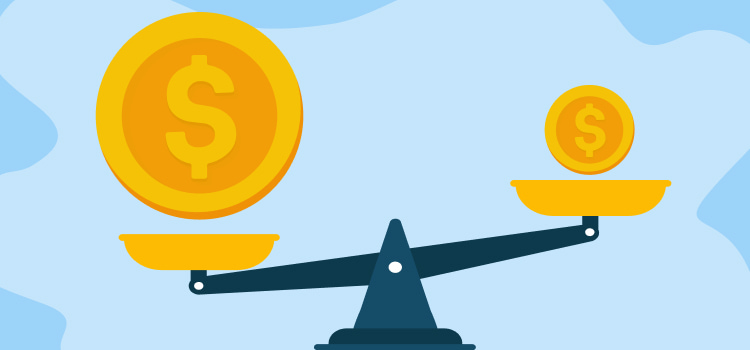
- The trader is trading the BTC / USD pair and has a total of $10,000 at his disposal. It is noted that the market is growing; at the moment, the price of BTC is $9,500. The trader believes that the price will continue to rise; he is very convinced and wants to open long trade. However, despite how convinced he is, he only wants to bet $5,000 and is convinced that the price will rise that he wants to leverage by choosing 10x leverage.
- Thus, the trader takes $5,000 and invests it as his margin on the trade. This allows him to open a long position totaling $50,000 ($5,000 x 10 = $50,000), which is equivalent to approximately 5.26 BTC.
- Once his position is open, the trader waits for it to climax within the parameters he chose. The trader believes Bitcoin will hit $9,650, which will generate a profit of about $789.
At this point, two things can happen:
If the trader’s position wins, his exit will be $50,789, with an expected profit of $789 per trade. This profit will be distributed as a percentage for both the platform and the trader. The percentage depends on the platform. But if the trader loses, he will lose the entire position (or a significant part of it).
And to lose everything, Bitcoin would only need to drop to $1,900 (one-fifth of $9,500).
If the trader had carried out this operation without margin trading, his profit would have been much less. It would have been only $78. And in the event of a malfunction, Bitcoin must reach 0 to lose everything.
Hence, margin trading tools attract a lot of traders’ attention to get the best profit. However, this can also lead to large losses because no one can know if Bitcoin will rise or fall. Therefore, many traders do not rely only on their instincts; they educate themselves and use trading signals.
Pros and cons of margin trading
Among the advantages of margin trading are:
- This allows you to get more profit from open trading positions.
- A trader can diversify his positions a little better and use each of them. This situation can offset the risks of losses from your trades by offsetting them against each other.
- You can open large positions without having large amounts of money on the exchanges. This is especially useful on cryptocurrency exchanges where hackers can attack the platform.
The disadvantages of margin trading include:
- This can lead to large losses. Trading platforms with margin trading options can settle losing trades. Hence, when you make a margin call, it could mean a complete loss of the margin. There is also the possibility of losses over the margin entered by the trader, leaving you with debt.
- This is not a tool for beginners or casual users. In markets such as cryptocurrencies, high asset volatility makes these trades particularly risky.
Using trading signals will help both beginners, and experienced traders minimize risks and not miss profitable trades.
How to avoid a margin requirement?
The margin call is a thorny issue for traders when the market moves against your predictions.
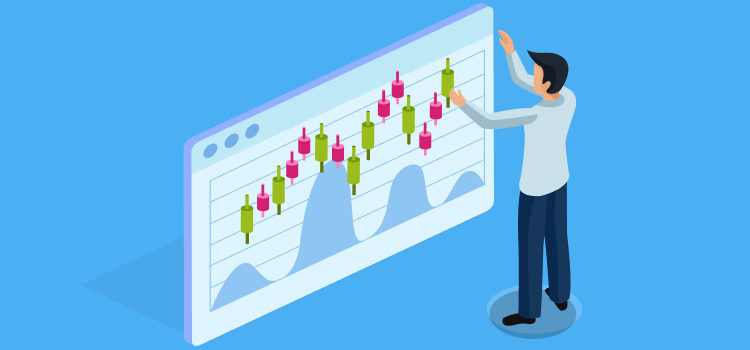
How do I avoid a margin requirement? Here are some suggestions:
- Contribute more funds. If you think the market will turn in your favor, you may want to consider depositing additional funds into your account. Remember that this is a risky operation; if the market continues to go against your forecasts, you may also lose additional funds.
- Always place your stop loss. If you decide right away when your trade should end in the event of a negative result, you have more control over your losses. You can also enable the use of trading signals here.
- Effective capital management. Always check your investments; invest no more than you are willing to lose, but only the amount you can do without.
- Free positions. If you have multiple open positions marked in red, consider closing some to free up liquidity in favor of other positions that might be successful, at least according to your calculations.
What is a margin call?
The margin call is one of the biggest problems for traders. A margin call occurs when your account balance is equal to the margin when the margin level is 100%.
What does the margin requirement include? Firstly, you will not be able to open new positions; in fact, your availability will be zero and fully used to keep existing positions open.
According to ESMA rules, all active positions will be closed automatically when the margin level reaches 50%. The margin requirement is a notification that the broker warns you that your open trades may be closed automatically, even at a loss.
Keep in mind that a broker with a margin level below 100% can independently close your open positions even before reaching 50%. Ask your broker what their margin policy is.
All regulated European brokers apply negative balance protection, which means you cannot go into debt with the broker. If the account reaches zero, all positions are simply closed.
Use trading signals to receive notifications about profitable deals; they also minimize risks.
